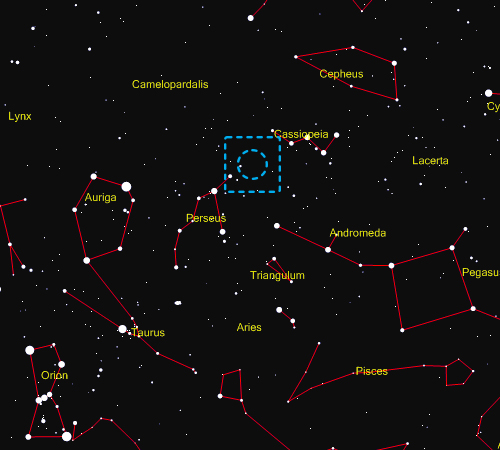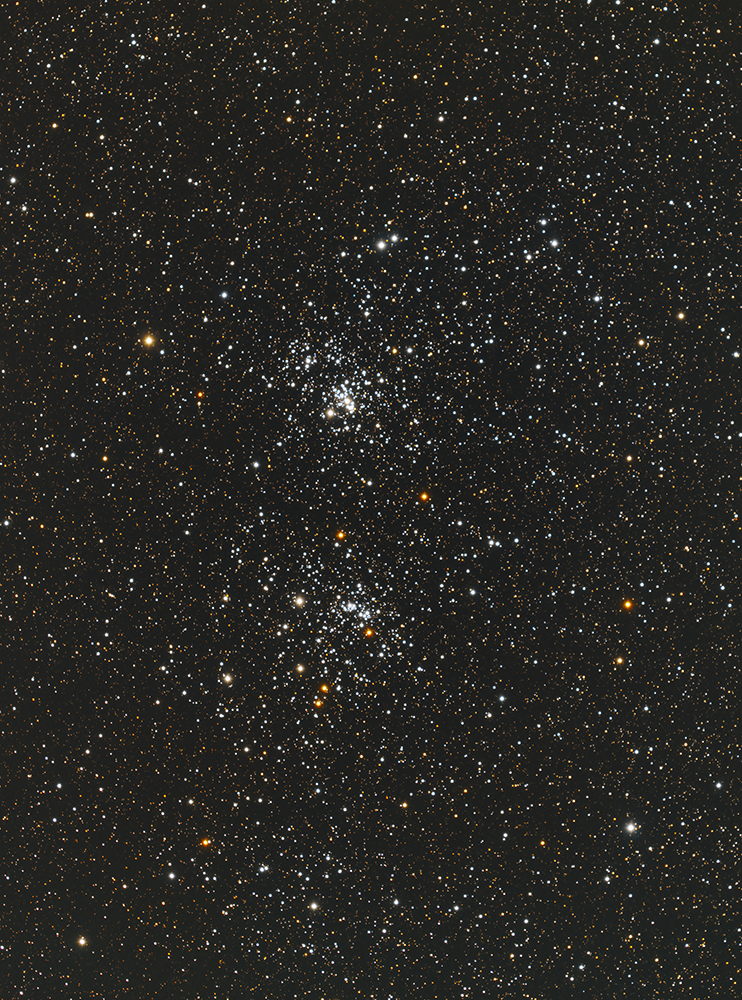The Double Cluster consists of a pair of open clusters; NGC 869, pictured at the top, and NGC 884 below. Each cluster contains around 300 stars that are mainly bright blue-white super giants. The two clusters have a mass of around 3,200 solar masses each, however, the wider complex of the Double Cluster has a mass of at least 20,000 solar masses. Based on their individual stars, the clusters are relatively young, only a few million years old. In comparison, the Pleiades have an estimated age ranging from 75 million to 150 million years. The Double Cluster is approaching Earth at about 40 km/s.
Although the object in this area of sky was catalogued by Hipparchus, the Greek astronomer, as ‘a patch of light in Perseus’ as early as 130BC, the clusters are only about 200 light years apart, so were only separated into two distinct objects in the early 19th century by William Herschel. For some unknown reason Charles Messier did not catalogue this object.
Perseus and The Double Cluster are circumpolar, meaning that, from our latitude, they are visible all year round, though best observed in winter when high in the sky. It is possible to make out the bright patch of sky with the naked eye, but when viewed through binoculars or a telescope, the area comes to life as a swarm of stars.
In Greek mythology, Perseus is the symbol of adventure. He was a demi-god, born the son of Zeus. Perseus was challenged to slay the Gorgon, Medusa, which he duly accomplished along with saving Andromeda, who was a princess chained to a rock as a sacrifice to a sea monster. His great achievements earned him a place in the stars with Medusa's head in one hand and a sword in the other. The Double Cluster represents the jewelled handle of his sword. |


